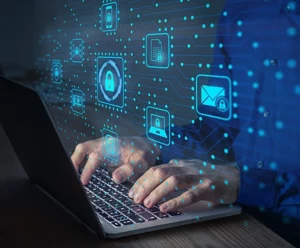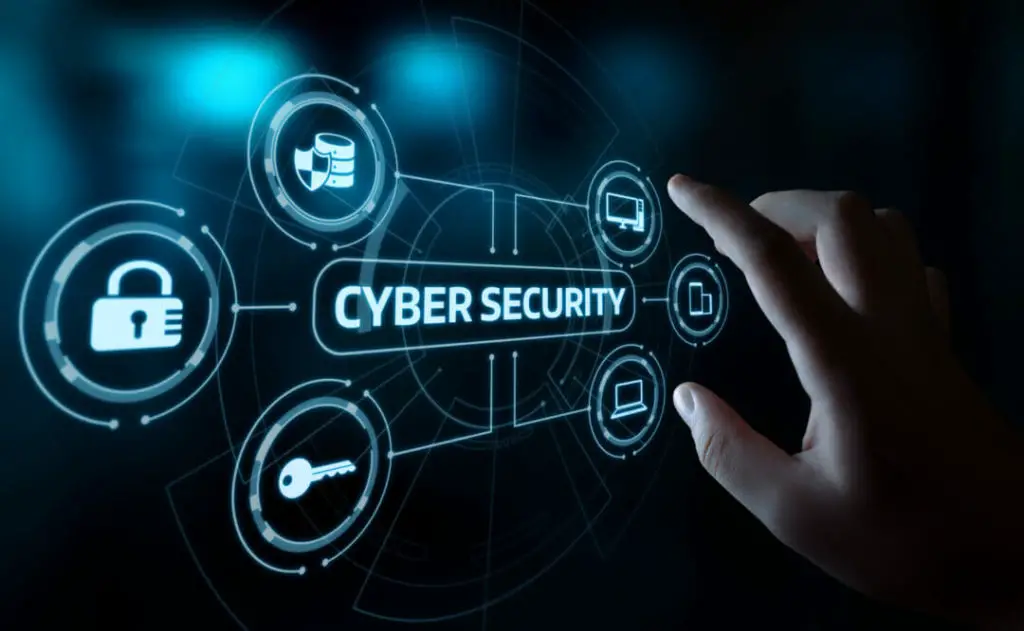Cybersecurity is the practice of preventing unauthorized access to or attacks on computer systems and networks. Our lives in the Internet age increasingly rely on online banking, socializing, and shopping.
We keep pictures and private data on our laptops and in the cloud. Our personal and professional lives are linked with the internet, from social networking to online banking.
Although technology has simplified our lives, it has also introduced new dangers and vulnerabilities. Our personal information and sensitive data are at risk due to cybercriminals constantly developing new ways to exploit holes in our digital systems. In this situation, cybersecurity is essential.
Individuals, companies, and governments must invest in cybersecurity to safeguard their information and assets from thieves.
Therefore, cybersecurity is of utmost importance in this increasingly internet-centric world. You can register for specialized I.T.
Security certifications online to gain an understanding of cyber security and its significance. These programs will improve your intuitive abilities and allow you to interact with subject matter experts.
Read Also: The Impact of Technology on Job Loss and the Economy
Types of Cyberattacks
There have been numerous high-profile cyberattacks in recent years that have severely hurt both organizations and people.
Examples are social security numbers, bank account information, credit card numbers, and sensitive data leaks. The main reason is that most people use cloud storage services – Google Drive or Dropbox to keep their data safe.
These attacks have underscored the significance of having adequate cybersecurity safeguards in place. The following are the most common cyberattacks:
1. Phishing Attacks
Cyberattacks of the phishing variety deceive users into clicking on harmful links or attachments. Phishing is a frequent cyberattack that includes duping people into giving up sensitive data.
Cybercriminals employ strategies, such as constructing fake websites or posing as reliable people, to make their emails or messages appear natural.
Once the victim supplies their information, the cybercriminal can access the victim’s computer systems, steal their identity, and engage in financial fraud. A notable instance is the recent spear phishing attack on Ukraine.
2. Malware Infections
A form of harmful software known as malware can infect computers and other electronic devices. It is capable of information theft, device espionage, and system attack.
Any software intended to damage or abuse computer systems falls under this category. This covers spyware, trojans, and viruses.
Email attachments, corrupt software downloads, malicious websites, and other methods can all lead to the installation of malware on a computer. Once deployed, malware can harm computer systems, steal private data, or give hackers access to the network.
3. Denial-of-service Attacks (DDoS)
Cyberattacks of the distributed denial of service variety involve saturating a computer system with traffic. This can be accomplished by overtaxing the system with requests or traffic, breaking it so it can no longer operate correctly, or both.
To launch a DDoS assault, cybercriminals frequently employ a botnet or collection of infected computers. A website or server that has been attacked may go offline, interrupting business processes or online services.
Examples include the CloudFlare DDoS Attack in 2014, the Hong Kong DDoS Attack in 2014, and The GitHub Attack in 2018.
4. Ransomware Attacks
Malware called ransomware is created to prevent access to a computer system until a token is paid. It encrypts data or computer systems and requests payment to unlock them.
Typically, ransomware is installed by cybercriminals through malicious software downloads or email attachments. The ransomware can lock the victim out of their computer system or encrypt files once installed. The victim must pay a ransom to get back into the system.
Ransom payments are generally made with Bitcoin to avoid leaving a trace that could implicate them with law enforcement.
5. Man-in-the-middle (MitM) Attacks
A MitM attack is a style of attack in which the attacker eavesdrops on two parties’ communications. Eavesdropping on a network connection or diverting traffic to a rogue server are two ways to accomplish this.
6. SQL Injection
A cyberattack known as a SQL injection attack uses flaws in web applications to insert malicious SQL code into databases. This code can examine, remove, or change database data. SQL injection attacks can also take over the server or perform other nefarious deeds.
Because it serves to shield us from these and other threats, cybersecurity is essential. We may contribute to the security of our systems and data by being aware of the dangers and taking action to reduce them. Examine the necessity for cybersecurity in a world that is becoming increasingly digital.
6. Insider Threats
Cyberattacks committed by someone with authorized access to computer systems are insider threats. This can refer to staff members, independent contractors, or outside vendors.
Insider threats, which can result in the theft of private information or the disruption of business operations, can be intentional or accidental.
Types of Cyber Attack Cost
A variety of factors influence the price of cybercrime. However, a lack of attention to the proper cybersecurity practices is to blame for each issue.
Lack of attention to cybersecurity can harm your company in several ways, including:
Financial Costs
Business information theft, Intellectual property theft, commercial interruption, and the cost of fixing broken systems
Cost of Reputation
Customers to competitors, a decline in consumer confidence, and negative media coverage
Regulation Fees
Cybercrimes may result in regulatory fines or sanctions for your organization because of GDPR and other data breach legislation.
Regardless of size, all firms must ensure that all employees know cybersecurity hazards and how to counter them.
Examples of Firms that faced Cyber Attacks
It is challenging to comprehend the direct and indirect consequences of many security breaches, given the nature of cybercrime and how hard it may be to detect.
In recent years, there have been a staggering amount of cyberattacks and data breaches, and it’s easy to think of a long list of well-known companies that have suffered.
Here are a few illustrations. See our page on the most significant data breaches for the complete list.
Equifax
Approximately 145.5 million U.S. consumers and 400,000–44 million Britons, and 19,000 Canadians were impacted by the Equifax cybercrime identity theft incident.
The day after the attack, early trading on Equifax shares saw a 13% decline. Multiple lawsuits were brought against Equifax due to the leak. Not to mention the harm is done to Equifax’s reputation.
On July 22, 2019, Equifax and the FTC reached a settlement, which included a $100 million punishment, a $175 million fund for states and territories, and a $300 million fund for victim compensation.
Adult Friend Finder
Hackers gathered 20 years’ worth of information from six databases in October 2016 that contained user names, email addresses, and passwords for The FriendFinder Network.
FriendFinder Network websites include Adult Friend Finder, Penthouse.com, Cams.com, iCams.com, and Stripshow.com.
By the time LeakedSource.com published its study of the whole data set on November 14, most passwords were only secured by the insecure SHA-1 hashing algorithm, meaning that 99% had already been broken.
eBay
The 145 million customers of eBay all had to reset their passwords due to a password breach between February and March 2014.
Attackers gained access to this treasure trove of user data via a limited set of staff credentials. Encrypted passwords and other personal data, such as names, email addresses, physical addresses, phone numbers, and dates of birth, were among the stolen data.
In May 2014, following a month-long investigation by eBay, the breach was made public.
Yahoo
Yahoo reported that 1 billion accounts had been compromised due to a hacker group’s intrusion in August 2013. Identity theft risk was raised in this case due to the compromise of security questions and answers.
All impacted users were required to reset passwords and resubmit any unencrypted security questions and answers to make them encrypted in the future after Yahoo announced the hack for the first time on December 14, 2016.
However, Yahoo revised its prediction to 3 billion user accounts by October 2017. According to an inquiry, users’ bank information, payment card data, and clear-text passwords were not obtained.
This continues to rank among the most significant data breaches in recorded history.
While there have been several high-profile data breaches, it’s important to note that many more have gone unreported.
Read Also: How to clean your smartphone and keep it germ-free
The significance of cyber security in the digital age
One can’t overemphasize the importance of cyber security in the digital world. A single security compromise can have significant repercussions in today’s linked world.

For instance, the 2017 Equifax breach resulted in the exposure of more than 145 million people’s data, and the 2018 Marriott breach resulted in the direction of more than 500 million people’s data.
These breaches cost organizations money and damage their reputations with customers. Cybersecurity is, therefore, crucial to shielding organizations and people from the potentially disastrous effects of a security breach.
However, it would help if you first grasped how a substantial cybersecurity system benefits and safeguards students, businesses, organizations, and the banking industry to comprehend why it is crucial to learn about cybersecurity.
The Significance of cyber security for Students
Students should be concerned about cyber security because they are frequently the target of assaults. For example, in a recent incident, hackers targeted a group of students from a college in the U.S.
They acquired access to their data, including their Social Security numbers and credit card details. The hackers then utilized this data to illegally charge the students’ credit cards for thousands of dollars.
As a result, the kids had to spend months restoring their credit after incurring enormous debt. Since students are frequently the targets of cybercrime, this incident emphasizes the value of cyber security.
If a cyberattack results in a student’s data theft, identity theft may result. It can damage the student’s credit, challenging obtaining loans for a car or education. Identity theft can, in severe circumstances, result in jail time.
Significance of cyber security in organizations and business
The target data breach exemplifies cyber security’s importance for companies and organizations. In this instance, hackers successfully accessed consumer data from the target, including credit and debit card details.
As a result, Target was forced to pay millions of dollars in damages, and its reputation with customers suffered. However, the Target data breach is only one illustration of the significance of cyber security for businesses and organizations.
The WannaCry ransomware outbreak, which hit businesses and organizations worldwide, illustrates a data breach. Many organizations lost data and money due to this attack, and some were forced to shut down.
Individuals can take accredited courses in ethical hacking to protect their data from malware and security breaches. You can enroll in this course and learn all there is to know about cyber security.
The significance of cyber security for the banking industry
The 2014 JPMorgan Chase data breach is a practical illustration of the importance of cyber security for the banking industry.
The names, phone numbers, addresses, and email addresses of 7 million small businesses and 76 million households were exposed to hackers in this attack.
The hackers also accessed 83 million JPMorgan Chase clients’ account details, including account numbers and balances.
Because hackers were able to access a significant amount of private client information, this breach serves as a reminder of the value of cyber security for the banking industry. If this information had fit the
Cyberattacks can have several detrimental effects on a company. For instance, they may result in the loss of crucial data, an interruption of business operations, and monetary losses.
How can your business be protected from cybercrime?
Cyberattacks occasionally even pose a threat to people’s lives. Therefore, organizations need robust cybersecurity measures to safeguard themselves against these dangers.

It would help if you took several actions to safeguard your company from cybercrime. The first thing you need is a robust cybersecurity policy. Data encryption, firewalls, and intrusion detection systems should all be part of this policy.
Below are ways you can protect your organization from cyber-attacks.
Staff Education
Human mistakes accounted for 90% of data breaches in 2019. However, there is a positive aspect to this alarming number.
Most data breach events might be prevented if staff members were taught how to recognize and appropriately react to cyber threats.
Such training initiatives also raise the value of all investments in cybersecurity solutions since they would stop personnel from carelessly disabling costly security measures to aid in cybercrime.
Guard Your Sensitive Information
Invest in tools that prevent information loss, monitor vendor and third-party risk, and regularly check for data exposure and compromised credentials.
If data leaks go unchecked, fraudsters may use them to infiltrate corporate networks and compromise sensitive data. Therefore, creating a data leak discovery solution that can also track leaks across the third-party network is crucial.
Since over 60% of data breaches are caused by compromised third-party providers, most instances can be avoided by halting vendor data leaks.
It would aid if you also taught your staff how to recognize and report online risks. Finally, frequently watch for any strange behavior on your network.
By taking these actions, you will considerably lower the likelihood that your business will fall victim to cybercrime.
Put a Third-Party Risk Management (TPRM) solution in place
Third-Party Risk Management (TPRM) is the procedure for evaluating and reducing risks related to outsourcing to third-party suppliers or service providers.
Utilize technology to cut costs by automatically distributing vendor assessment questionnaires as part of a comprehensive approach for assessing cyber security risk.
Instead of asking why cybersecurity is necessary, businesses should ask how they can ensure their cybersecurity procedures are enough to abide by the GDPR and other laws and safeguard their operations against sophisticated cyberattacks.
Read Also: How to secure your smartphone from cyber threats
How Can You Protect Your Data More Effectively?
There are many reasons why people should safeguard their data. For example, unauthorized parties can access and use data if it is not protected, which is one reason. Therefore, it may result in fraud, identity theft, and other crimes.

Another reason is that unprotected data can be lost or destroyed, which could be disruptive or financially detrimental. Some techniques people can use to protect their data better include:
Use Strong Passwords
Passwords should contain a combination of lowercase and uppercase letters, symbols, and numbers and be at least eight characters long. Avoid using words like your name or birthdate that are easily guessed.
Make use of password management
A password manager can assist you in managing your passwords and helping you create secure ones. Password reuse makes it simpler for hackers to access your accounts, so avoid doing it.
Maintain Software upgrades
Software upgrades frequently include security fixes that can help secure your data.
Use two-factor authentication
Two-factor authentication increases security by asking you to input a password and a code sent by email or phone.
Be Wary of Phishing Scams
Phishing scams are emails or websites that deceive you into providing personal information by pretending to be a reputable company.
Protect Your Data
By backing up your data, you can be sure that even if your computer is stolen or lost, you can still access it. It is essential to back up your data regularly to ensure that you can recover from a cyberattack or other tragedy.
Back up your data frequently to a safe location, like the cloud or an external hard drive. If necessary, test your backups to ensure you can restore your data.
Apply the tried-and-true 3, 2, 1 guideline. Three copies of your data, two of which should be backup copies, are required. One means that one of the backup copies should be kept offsite and in a different place than the initial backup copy.
In contrast, two points that your backup copy should be kept on two other media, such as tape or multiple storages.
Conclusion
It is crucial to understand the relevance of cybersecurity awareness. Every person needs to be informed about the evolving elements of the digitalized environment.
One explanation for this is how essential the internet has become to our daily life. Everything from shopping to banking to staying in touch with friends and family is done via it.
We also disclose more private information online as we use it more frequently. Unfortunately, our identities, money, or data could be stolen using this information.
Another reason to understand the significance of cybersecurity is the rising frequency of cyberattacks, which requires us to be more vigilant than ever.
Moreover, the stakes are rising as our reliance on technology increases. A cyber attack, for instance, might shut down a hospital or the electricity infrastructure or even launch a war.
Finally, given that this field is expanding, it is critical to educate yourself on cybersecurity. The sector of cybersecurity is increasing and offers more and more work prospects.
The demand for professionals who can defend us from cyberattacks will only grow as our reliance on technology increases.
As a result, people and businesses must be aware and take the appropriate precautions to secure their digital assets, as cybersecurity threats are continually growing and getting more complex.
It’s critical to keep up with the most recent cybersecurity dangers and to put best practices into effect, such as using strong passwords, updating software, and avoiding shady emails and websites, to reduce these risks.

